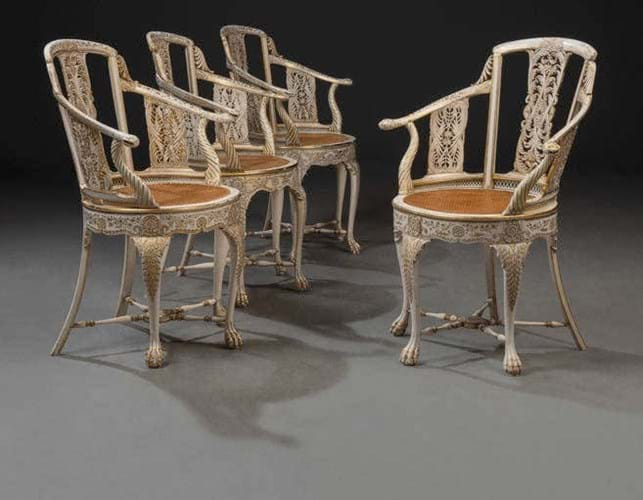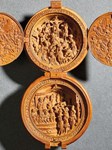
Four Murshidabad chairs from a suite of ivory and gilt furniture including a sofa sold for £3.1m at Christie’s. The chairs have an unbroken provenance back to their commission by Manni Begum.
The sofa and four chairs from a well-documented commission, c.1785, were guided at £400,000-600,000 but sold at £3.1m (£3.76m including premium) at Christie’s.
Traditional Indian interiors had no need of furniture, but Western-style seating was kept for visiting officials. Made by craftsmen in Murshidabad, the design of these pieces combines elements of European and Chinese furniture alongside decoration from the subcontinent. The tigers’ head terminals gave rise to a later (inaccurate) association of the suite with Tipu Sultan, the ‘Tiger of Mysore’.
The history of the suite (originally comprising at least two couches, two tables, four footstools and 14 chairs) is described in detail by Amin Jaffer in Furniture from British India and Ceylon (2001).
The furniture was originally gifted by Manni Begum (1720-1812), the widow of the Bengali puppet ruler Mir Jafa, to the senior East India Company official Warren Hastings (1732-1818) and his wife Marian. The various pieces were shipped to Hastings’ estate at Daylesford House in tranches between 1784-87.
Elements are now in museum collections (including the V&A and the Soames), with these five seats among those sold at auction in 1853 where they were bought for £1500 by the 2nd Earl of Lonsdale (1787-1872) for Lowther Castle, Penrith. They were last on the market in 2013 when sold at Sotheby’s in three lots for a total of £1.16m including premium.














